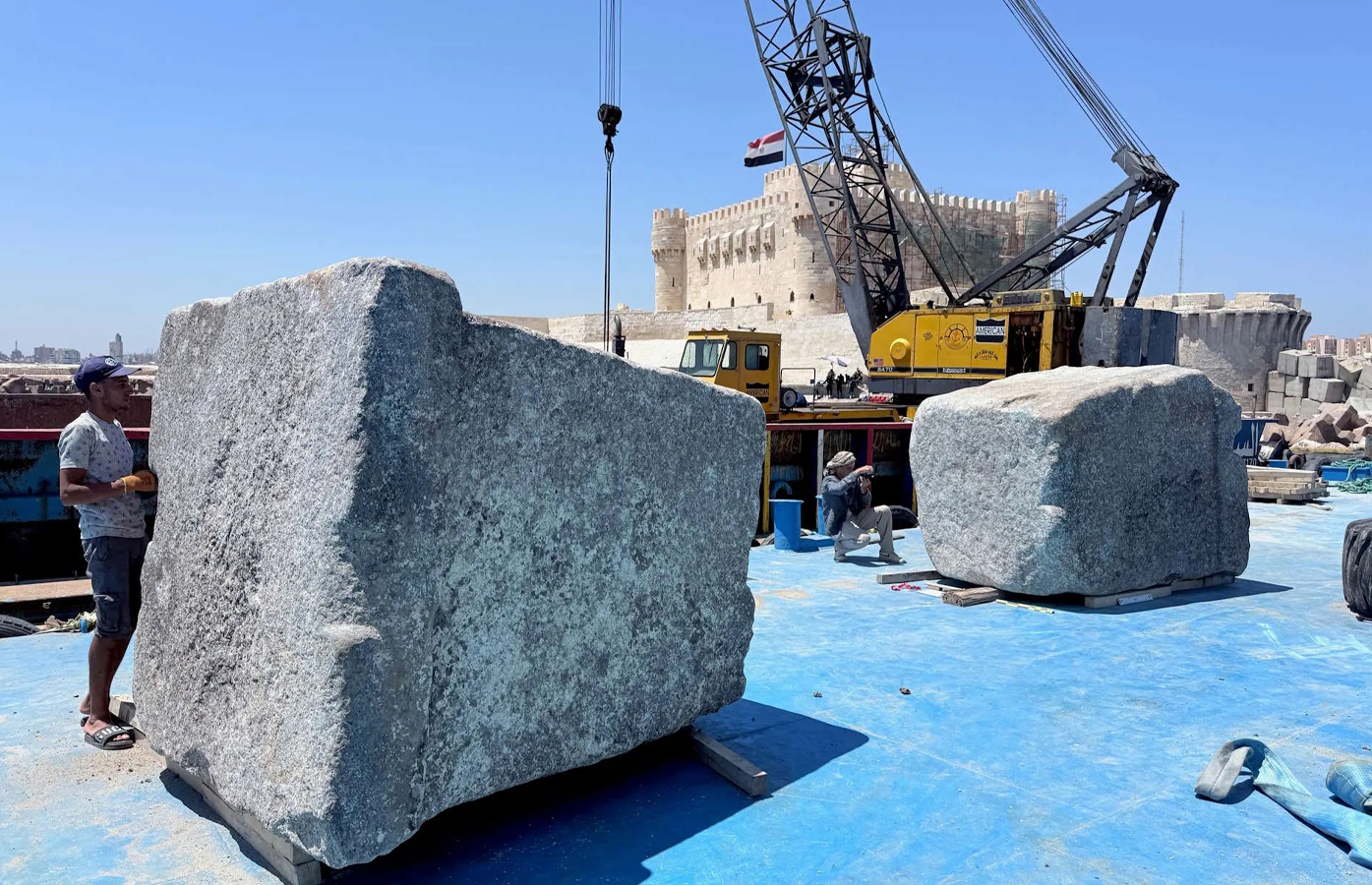Archaeologists have recovered twenty-two stone blocks from the Lighthouse of Alexandria, one of the Seven Wonders of the Ancient World.
Also known as the Lighthouse of Pharos, the Lighthouse of Alexandria was completed during the reign of Ptolemy II Philadelphus (280–247 BC) in the Ptolemaic Kingdom of Ancient Egypt.
Estimates suggest that the lighthouse stood at least 100 metres in height and was topped by a giant furnace and mirror that could be seen from several miles at sea.
Julius Caesar, in his Civil Wars (Part III, 111–112), describes the Pharos and its strategic importance. Gaining control of the lighthouse helped him subdue Ptolemy XIII’s armies (48 BC).
The lighthouse was severely damaged by three earthquakes between AD 956 and 1303 AD and became an abandoned ruin. The large limestone blocks used in the monument’s construction were robbed in 1480 to build the Citadel of Qaitbay.

In a recent underwater project known as PHAROS, archaeologists have raised stone blocks from around the island where the lighthouse once stood, including door lintels, thresholds, base slabs, and a Ptolemaic-era pylon with an elaborately carved door.
Backed by the La Fondation Dassault Systèmes and led by researcher Isabelle Hairy of CNRS, archaeologists are using digital simulations to virtually reconstruct the lighthouse to provide new insights into the construction, structure, and eventual collapse.
Pharos can be regarded as humanity’s first skyscraper. Its technical brilliance and architectural genius – emblems of the era’s scientific and artistic peak – allowed it to withstand time and history for over 1,600 years, said La Fondation Dassault Systèmes. “This research helps to fill gaps left by the highly fragmented archaeological remains.”
Header Image Credit : La Fondation Dassault Systèmes
Sources : La Fondation Dassault Systèmes





